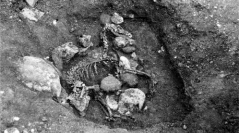

 Anthropozoologica
57 (12) - Pages 255-270
Anthropozoologica
57 (12) - Pages 255-270In south-eastern Alpine region, archaeozoological research of Early Medieval contexts has for a long time been all but neglected. In recent years, however, a few sites have been systematically investigated providing the opportunity to get deeper insights into some of the most characteristic aspects of the role of various animals in the economy of human communities of the time. Animal husbandry provided most of the consumed meat with caprines, pigs and poultry often significantly outnumbering cattle. Considering also the diminishing body-size and the relatively high average age-at-death values of these animals, the settlements are believed to have been economically autarkic units, existing on subsistence economy. The fairly homogeneous pattern of intra-site spatial distribution of animal finds is indicative of limited social stratification and functional differentiation of the population. The interaction of the first Slavic newcomers of the 6th century AD with indigenous inhabitants in at least some parts of the studied area apparently resulted in a partial modification of animal husbandry strategy of the former, believed to have been traditionally based on pig rearing. The insights into the role of animals in the local mythology of that time are poor. The most prominent find is a canid skeleton from one of the burial sites, where it supposedly represented one of the points of spatial connotations of the area.
Early Middle Age, subsistence economy, wolf burial.